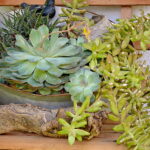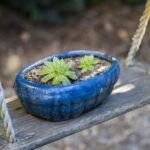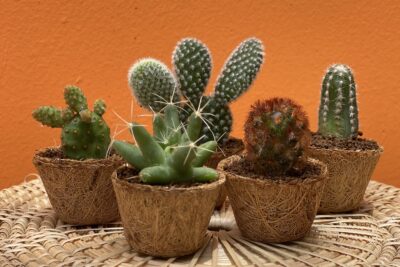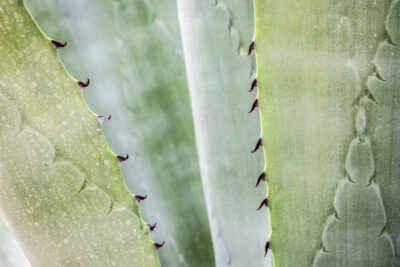
Epsom Salt for Succulent Plants: A Complete Guide

Succulent plants have gained immense popularity in recent years due to their unique appearance and low maintenance requirements. These plants, known for their thick, fleshy leaves and ability to store water, are a favorite among both novice and experienced gardeners. One essential aspect of caring for succulents is providing them with the right nutrients to ensure their healthy growth. One such nutrient that is often recommended for succulents is Epsom salt.
We will provide a complete guide on using Epsom salt for succulent plants. We will begin by explaining what Epsom salt is and how it can benefit succulents. Then, we will delve into the various ways in which Epsom salt can be used, including as a soil amendment, foliar spray, or soak. Additionally, we will discuss the appropriate dosage and frequency of Epsom salt application, as well as any potential risks or side effects. By the end of this article, you will have a clear understanding of how to incorporate Epsom salt into your succulent care routine and promote the health and vitality of your plants.
- Epsom salt can help improve the nutrient intake of succulent plants
- It can promote healthier root and foliage growth in succulents
- Epsom salt can aid in preventing and treating magnesium deficiency in succulents
- It can also enhance the color and vibrancy of succulent plants
- Epsom salt can be used as a foliar spray or added to the soil for succulents
- It is important to dilute Epsom salt properly before using it on succulent plants
- Frequently Asked Questions
Epsom salt can help improve the nutrient intake of succulent plants
Succulent plants are known for their ability to store water in their leaves and stems, making them low-maintenance and drought-tolerant. However, to thrive and grow, succulents still require certain nutrients. This is where Epsom salt can come in handy.
Epsom salt (Magnesium sulfate) contains magnesium and sulfur, both of which are essential micronutrients for plants. While succulents can survive in nutrient-poor soil, supplementing their diet with Epsom salt can help ensure they receive the necessary nutrients for optimal growth and overall health.
Why use Epsom salt for succulent plants?
There are several benefits to using Epsom salt for your succulent plants:
- Improved nutrient absorption: Magnesium plays a crucial role in photosynthesis, chlorophyll production, and nutrient uptake in plants. By adding Epsom salt to the soil, you can enhance the absorption of essential minerals, promoting healthier growth and development in your succulents.
- Prevention of nutrient deficiencies: Sulfur, another component of Epsom salt, is vital for the synthesis of amino acids, enzymes, and proteins in plants. By providing an adequate supply of sulfur through Epsom salt, you can help prevent nutrient deficiencies in your succulents, which can lead to stunted growth, yellowing leaves, and overall poor health.
- Enhanced root development: Epsom salt can also stimulate root growth in succulent plants. The magnesium content helps in the production of enzymes that facilitate root elongation and branching, resulting in a stronger and more extensive root system. A robust root system allows succulents to absorb water and nutrients more efficiently, promoting better overall plant health.
How to use Epsom salt for succulent plants
When using Epsom salt for your succulent plants, it's essential to follow these guidelines:
- Dilute the Epsom salt: Mix 1 teaspoon of Epsom salt with 1 gallon of water. This diluted solution will provide the necessary nutrients without overwhelming the plants.
- Apply the solution: Water your succulent plants with the Epsom salt solution once a month during the growing season. Avoid overwatering and ensure the soil is well-drained to prevent root rot.
- Monitor the plant's response: Observe your succulents closely after using Epsom salt. If you notice any adverse effects, such as leaf discoloration or wilting, discontinue the use of Epsom salt and adjust your watering routine.
Remember, while Epsom salt can be beneficial for succulent plants, it should be used in moderation and as a supplement to a well-balanced care routine. Proper sunlight, appropriate watering, and a suitable potting mix are equally important factors for the health and vitality of your succulents.
 Is It Normal for My Succulent to Have an Unusual Growth?
Is It Normal for My Succulent to Have an Unusual Growth?By incorporating Epsom salt into your succulent care regimen, you can provide your plants with the necessary nutrients to thrive and create a stunning display of healthy and vibrant succulents in your home or garden.
It can promote healthier root and foliage growth in succulents
Succulents are known for their unique ability to store water in their leaves and stems, making them highly adaptable to arid conditions. However, just like any other plant, they still require essential nutrients to thrive and grow. This is where Epsom salt comes into play.
Epsom salt, chemically known as magnesium sulfate, can be a beneficial supplement for succulent plants. It contains magnesium and sulfur, both of which are crucial for plant growth and development. When used in moderation, Epsom salt can promote healthier root and foliage growth in succulents.
One of the key benefits of Epsom salt is its ability to improve nutrient absorption in plants. Magnesium is an essential component of chlorophyll, the pigment responsible for photosynthesis. By providing succulents with an adequate supply of magnesium, Epsom salt helps enhance their photosynthetic efficiency, leading to healthier and greener foliage.
In addition, the sulfur in Epsom salt plays a vital role in the production of plant proteins and enzymes. These proteins and enzymes are responsible for various metabolic processes, including nutrient uptake and utilization. By ensuring an ample supply of sulfur, Epsom salt aids in the overall growth and development of succulent plants.
Furthermore, Epsom salt can also help prevent and treat certain common issues that succulent plants may face. For instance, magnesium deficiency is a common problem among succulents, which can manifest as yellowing leaves or stunted growth. By providing an additional source of magnesium, Epsom salt can help alleviate these symptoms and promote healthier growth.
 Can Succulents Die from Overwatering and Lack of Sunlight?
Can Succulents Die from Overwatering and Lack of Sunlight?It is important to note that while Epsom salt can be beneficial for succulent plants, it should be used in moderation. Excessive use of Epsom salt can lead to salt buildup in the soil, which can harm the plants. It is recommended to dilute Epsom salt in water and apply it to the soil sparingly, following the recommended dosage.
Epsom salt can be a valuable tool in promoting healthier root and foliage growth in succulents. By providing essential nutrients like magnesium and sulfur, it enhances photosynthesis, improves nutrient uptake, and aids in overall plant growth and development. However, it is crucial to use Epsom salt in moderation to avoid any potential harm to the plants.
Epsom salt can aid in preventing and treating magnesium deficiency in succulents
Succulent plants are known for their ability to store water in their leaves, stems, and roots, making them a popular choice among plant enthusiasts. However, like any other living organism, succulents require essential nutrients to thrive and maintain their vibrant appearance.
One common issue that succulent owners may encounter is magnesium deficiency. Magnesium is a vital nutrient that plays a crucial role in various plant functions, including chlorophyll production, photosynthesis, and enzyme activation. When succulents lack magnesium, they may exhibit symptoms such as yellowing leaves, stunted growth, and overall poor health.
Fortunately, Epsom salt can be an effective remedy for preventing and treating magnesium deficiency in succulent plants. Epsom salt, scientifically known as magnesium sulfate, consists of magnesium, sulfur, and oxygen. Its water-soluble nature allows succulents to absorb the magnesium quickly and efficiently.
How does Epsom salt help succulent plants?
Epsom salt provides succulents with a readily available source of magnesium, which is essential for chlorophyll synthesis. Chlorophyll is the pigment responsible for the green color in plants and is crucial for photosynthesis. By ensuring an adequate supply of magnesium, Epsom salt helps maintain healthy chlorophyll levels in succulents, promoting their overall growth and vitality.
In addition to chlorophyll production, Epsom salt also aids in enzyme activation within succulent plants. Enzymes are biological catalysts that facilitate various biochemical reactions necessary for plant growth and development. Magnesium, as a cofactor, activates enzymes involved in processes such as carbohydrate metabolism and protein synthesis.
 Trimming Succulents: Can I Safely Prune the Top of an Overgrown Plant?
Trimming Succulents: Can I Safely Prune the Top of an Overgrown Plant?How to use Epsom salt for succulent plants
Using Epsom salt on succulent plants is relatively simple. Here are the steps to follow:
- Mix 1 teaspoon of Epsom salt with 1 gallon of water.
- Stir the mixture until the Epsom salt is fully dissolved.
- Water your succulent plants with the Epsom salt solution, ensuring the soil is thoroughly soaked.
- Repeat this process every 2-4 weeks, depending on the severity of magnesium deficiency.
Note: It's essential not to overuse Epsom salt on succulent plants, as excessive magnesium can lead to other nutrient imbalances. Always follow the recommended dosage and frequency.
Epsom salt can be a valuable tool for succulent owners in preventing and treating magnesium deficiency. By providing a readily available source of magnesium, Epsom salt helps maintain healthy chlorophyll levels and activates crucial enzymes in succulent plants. Remember to use Epsom salt in moderation and follow the recommended dosage to ensure optimal growth and health for your succulents.
It can also enhance the color and vibrancy of succulent plants
Succulent plants are known for their unique and vibrant colors, making them a popular choice among plant enthusiasts. If you want to enhance the color and vibrancy of your succulents, Epsom salt can be a game-changer.
Epsom salt, also known as magnesium sulfate, is a natural mineral that has numerous benefits for plants. When used in the right way, it can provide essential nutrients to succulents and promote their overall health and beauty.
One of the main reasons why Epsom salt is beneficial for succulent plants is its high magnesium content. Magnesium is an essential nutrient that plays a crucial role in chlorophyll production, which is responsible for the green color in plants. By providing an adequate amount of magnesium, Epsom salt helps in maintaining and enhancing the natural green color of succulent leaves.
 Can Succulents Survive a Freeze Unprotected?
Can Succulents Survive a Freeze Unprotected?In addition to enhancing the green color, Epsom salt can also intensify the overall vibrancy of succulents. The magnesium in Epsom salt aids in the absorption and utilization of other essential nutrients, such as nitrogen and phosphorus. These nutrients are vital for healthy plant growth and contribute to the vibrant colors of succulent leaves and flowers.
To use Epsom salt for enhancing the color and vibrancy of your succulent plants, you can follow these simple steps:
- Dilute the Epsom salt: Mix 1 tablespoon of Epsom salt with 1 gallon of water. Stir well until the salt is completely dissolved.
- Water your succulents: Pour the diluted Epsom salt solution onto the soil around the base of your succulent plants. Make sure to avoid getting the solution on the leaves as it may cause burning or damage.
- Repeat regularly: Apply the Epsom salt solution once every month during the growing season (spring and summer) to maintain the enhanced color and vibrancy of your succulents.
It's important to note that while Epsom salt can be beneficial for succulents, it should be used in moderation. Excessive use of Epsom salt can lead to nutrient imbalances and harm the plants. Always follow the recommended dilution ratio and frequency of application for optimal results.
By incorporating Epsom salt into your succulent care routine, you can enjoy not only healthier plants but also more vibrant and visually appealing succulents.
Epsom salt can be used as a foliar spray or added to the soil for succulents
Epsom salt, also known as magnesium sulfate, is a popular natural remedy that can be beneficial for succulent plants. Whether used as a foliar spray or added to the soil, Epsom salt provides essential nutrients that can enhance the growth and overall health of your succulents.
Using Epsom salt as a foliar spray
One way to utilize the benefits of Epsom salt for your succulents is by using it as a foliar spray. This method allows the plants to absorb the nutrients through their leaves. To create an Epsom salt foliar spray, simply dissolve 2 tablespoons of Epsom salt in 1 gallon of water. Transfer the solution to a spray bottle and mist your succulents once a month.
 Protecting Succulents: Tips for Cold Weather Survival
Protecting Succulents: Tips for Cold Weather SurvivalThe Epsom salt foliar spray can help improve the color and vibrancy of the succulent's foliage. It provides magnesium, which is an essential mineral for chlorophyll production. This, in turn, enhances photosynthesis and promotes healthy growth.
Adding Epsom salt to the soil
Another way to incorporate Epsom salt into your succulent care routine is by adding it directly to the soil. This method ensures that the plants receive a steady supply of nutrients over time. When used in the soil, Epsom salt provides magnesium and sulfur, which are vital for plant development.
To use Epsom salt in the soil, mix 1 tablespoon of Epsom salt with 1 gallon of water. Water your succulents with this solution once every two to three months. Remember to adjust the amount of Epsom salt based on the size of your plants and the specific instructions of the fertilizer you are using.
Benefits of using Epsom salt for succulents
Using Epsom salt for your succulents can offer several benefits, including:
- Improved nutrient absorption: Epsom salt provides magnesium and sulfur, which are essential nutrients for succulent plants. These nutrients enhance the absorption of other vital minerals and promote overall plant health.
- Enhanced growth: The added nutrients from Epsom salt can boost the growth of your succulents, leading to larger and healthier plants.
- Prevention of nutrient deficiencies: Magnesium and sulfur deficiencies can cause yellowing leaves and stunted growth in succulents. By using Epsom salt, you can prevent these deficiencies and keep your plants thriving.
- Improved root development: Epsom salt stimulates root growth, allowing your succulents to establish strong and healthy root systems.
It's important to note that while Epsom salt can be beneficial for succulents, it should be used in moderation. Overuse of Epsom salt can lead to nutrient imbalances and harm your plants. Always follow the recommended dosage and consult a gardening expert if you have any concerns.
By incorporating Epsom salt into your succulent care routine, you can provide your plants with the nutrients they need to thrive. Whether used as a foliar spray or added to the soil, Epsom salt can help enhance the growth, color, and overall health of your succulent plants.
It is important to dilute Epsom salt properly before using it on succulent plants
It is important to dilute Epsom salt properly before using it on succulent plants
 Using Regular Miracle Gro Fertilizer: Is it Suitable for Succulents?
Using Regular Miracle Gro Fertilizer: Is it Suitable for Succulents?Succulent plants have gained immense popularity in recent years due to their unique beauty and low-maintenance characteristics. As a succulent enthusiast, you may be constantly looking for ways to enhance the health and growth of your beloved plants. One natural solution that has been praised by many succulent enthusiasts is Epsom salt.
Epsom salt, scientifically known as magnesium sulfate, is a mineral compound that contains magnesium, sulfur, and oxygen. While it is commonly used for various household purposes, such as in bath salts, it can also be beneficial for succulent plants when used in the right way.
However, it is crucial to dilute Epsom salt properly before applying it to your succulents. Using undiluted Epsom salt can cause harm to your plants, as the concentrated minerals can lead to nutrient imbalances and root damage.
Here is a step-by-step guide on how to dilute Epsom salt for use on your succulent plants:
- Choose the right concentration: The recommended concentration for Epsom salt solution is 1 teaspoon per gallon of water. This dilution is suitable for most succulent plants and helps prevent any potential damage.
- Measure the Epsom salt: Using a measuring spoon, carefully measure out the desired amount of Epsom salt. One teaspoon is equivalent to approximately 5 grams.
- Dissolve the Epsom salt: Fill a container with warm water and add the measured Epsom salt. Stir the mixture thoroughly until the salt is completely dissolved. It is important to use warm water as it helps the salt dissolve more easily.
- Cool down the mixture: Allow the Epsom salt solution to cool down to room temperature. This ensures that the water is not too hot, which can potentially harm the roots of your succulent plants.
Once the Epsom salt solution is properly diluted and cooled, it is ready to be used on your succulent plants. You can apply the solution by gently watering the soil around the base of the plants. Avoid spraying the solution directly onto the leaves, as this can cause damage or scorching.
It is important to note that Epsom salt should be used as a supplement and not as a substitute for regular watering and fertilizing routines. While Epsom salt can provide additional nutrients to your succulents, it should be used in moderation and as part of a well-balanced care routine.
By following the proper dilution process and using Epsom salt appropriately, you can help promote the health and vitality of your succulent plants. Remember, a little goes a long way when it comes to Epsom salt, so use it sparingly and always observe how your plants respond.
 Succulent Care on Wood: A Guide to Proper Maintenance
Succulent Care on Wood: A Guide to Proper MaintenanceNow that you have a complete guide on diluting Epsom salt for your succulent plants, go ahead and give it a try. Your succulents will thank you with their vibrant growth and stunning beauty!
Frequently Asked Questions
1. Can I use Epsom salt on my succulent plants?
Yes, you can use Epsom salt on your succulent plants. However, it should be used sparingly and in moderation.
2. How often should I apply Epsom salt to my succulent plants?
It is recommended to apply Epsom salt to your succulent plants once every 2-3 months. Overuse can cause salt buildup and harm the plants.
3. How should I apply Epsom salt to my succulent plants?
Dissolve one tablespoon of Epsom salt in one gallon of water, and use this solution to water your succulent plants. Avoid applying it directly to the leaves or stems.
 Reviving an Overwatered Succulent: Tips to Save Your Plant
Reviving an Overwatered Succulent: Tips to Save Your Plant4. What are the benefits of using Epsom salt on succulent plants?
Epsom salt can help improve the overall health and growth of succulent plants. It can enhance nutrient absorption, promote root development, and prevent certain mineral deficiencies.
If you want to read more articles similar to Epsom Salt for Succulent Plants: A Complete Guide, you can visit the Care and Maintenance category.






You Must Read